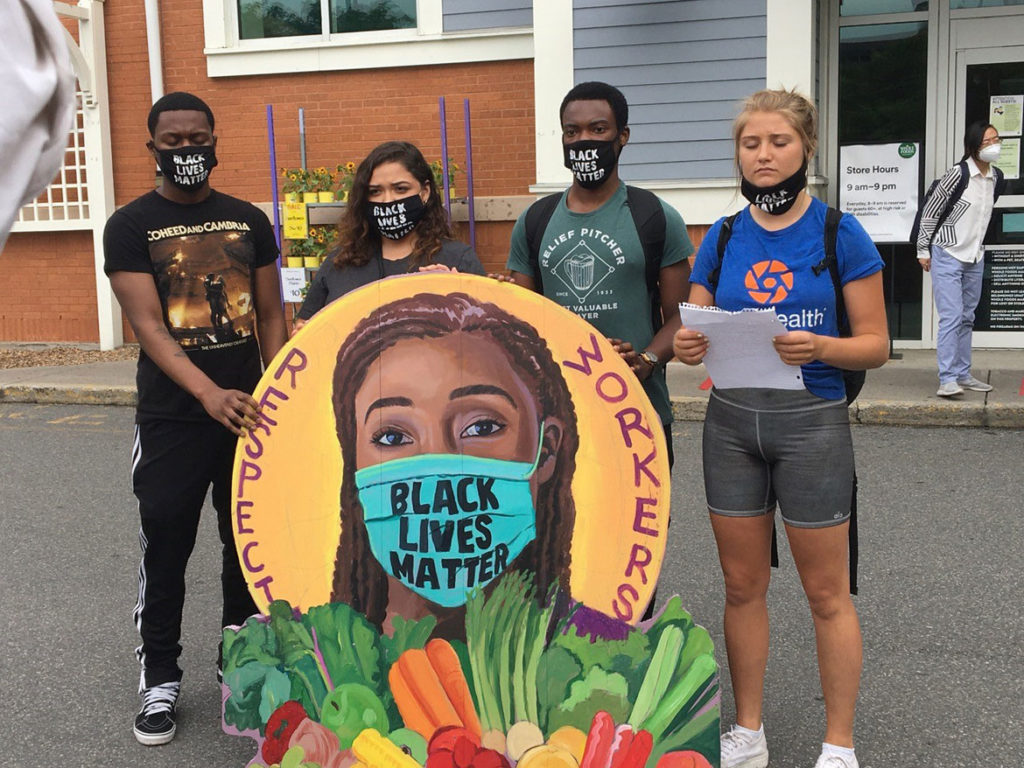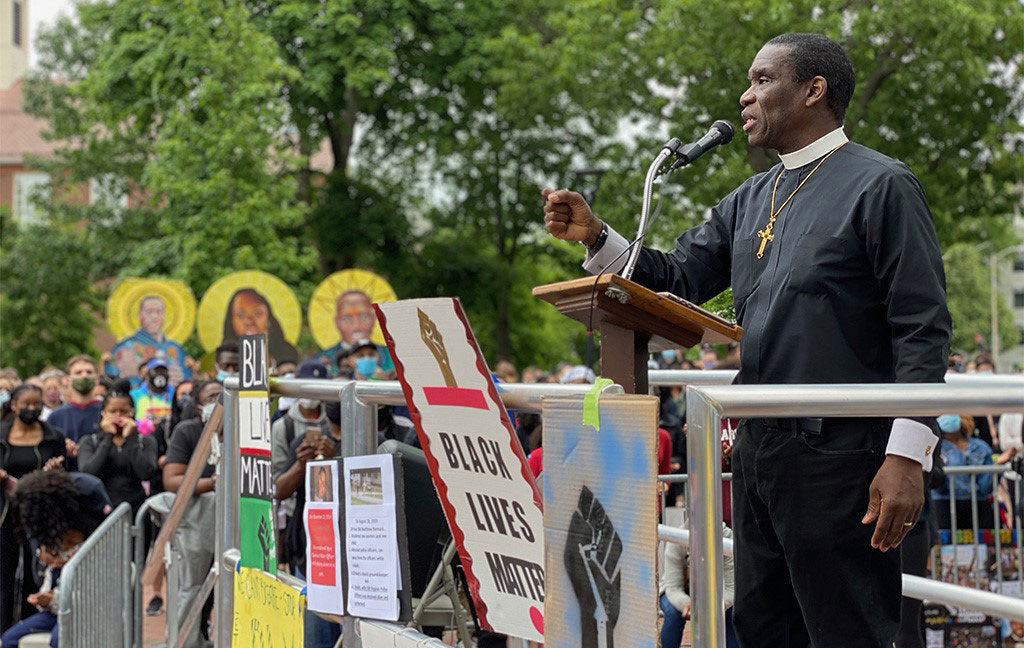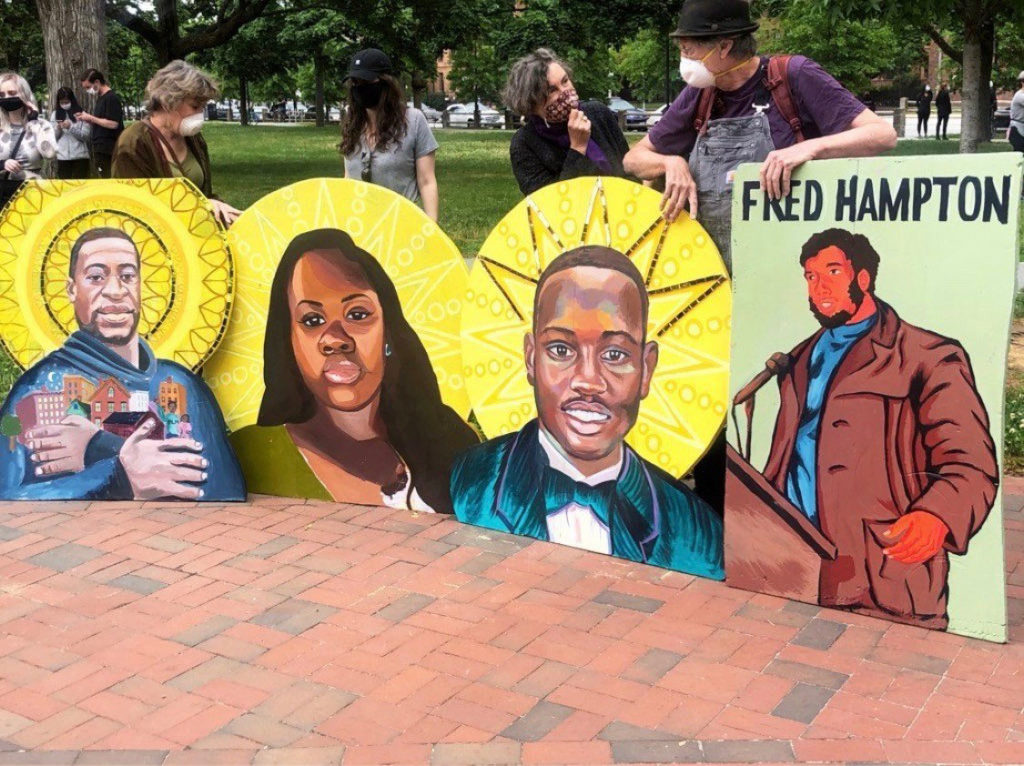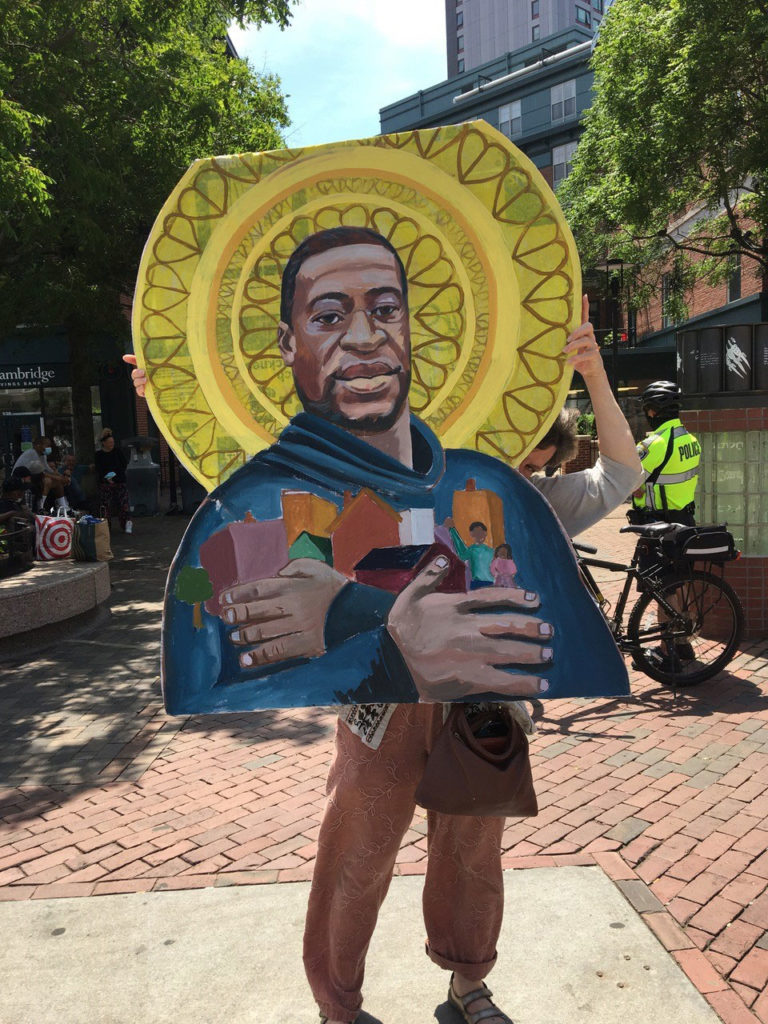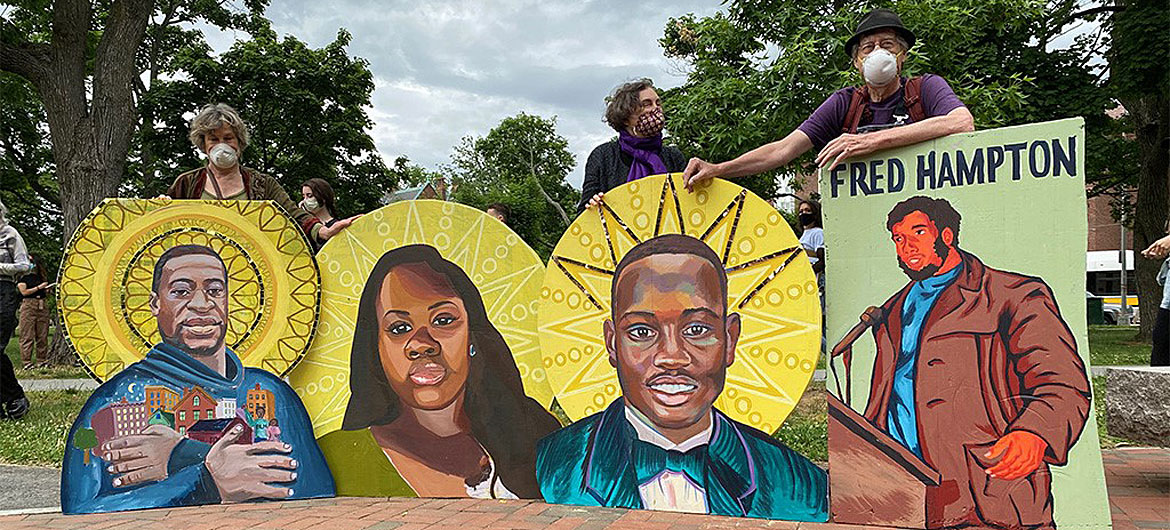“It’s one thing to see someone’s name, but to see their face, it’s a reminder that the people are people,” says Xerxes Butt, one of the artists behind the portable portraits of George Floyd, Breonna Taylor, Ahmaud Arbery, Philando Castile, Tamir Rice, Mubarak Soulemane and Fred Hampton that have appeared at recent Black Lives Matter protests in Cambridge and Boston.
The larger-than-life-sized portraits depict the dead with gold halos around there heads, like holy icons to martyrs murdered by people needing to enforce the lie of white supremacy.
“They used to be alive,” says David Fichter, another of the artists.
“They didn’t deserve to die,” Butt says.
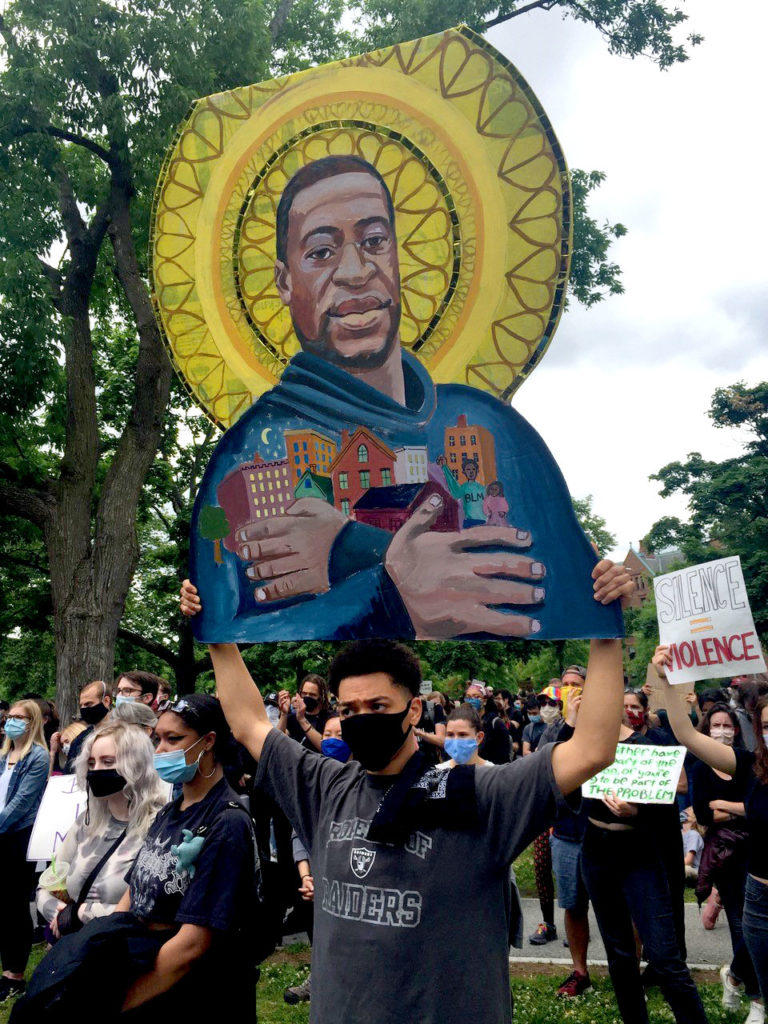
The project began, Butt says, when “David just called up a couple people and said, ‘Let’s make some interesting protest signs.'” The Cambridge artist invited people who’d helped him create the Mystic River Mural Project—which runs for hundreds of feet along Mystic Avenue in Somerville showcasing the area’s history and nature—and other murals and mosaics. Fichter says he aimed “to infuse art into the marches and rallies and get it on a scale that can be seen from a distance.”
They painted the portraits about 4 or 5 feet tall, on pink foam insulation board that’s sturdy, but lightweight for portability. They added gold mirror on some. And as protests began at the Whole Foods Market in Cambridge, where employees have protested being sent home without pay for wearing Black Lives Matter masks while working at the River Street business, they painted a new icon depicting a store worker wearing a coronavirus mask reading “Black Lives Matter.”
“People are really happy to see them whenever we bring to demonstrations,” Butt says. “They’re happy to see other people supporting the same cause.”
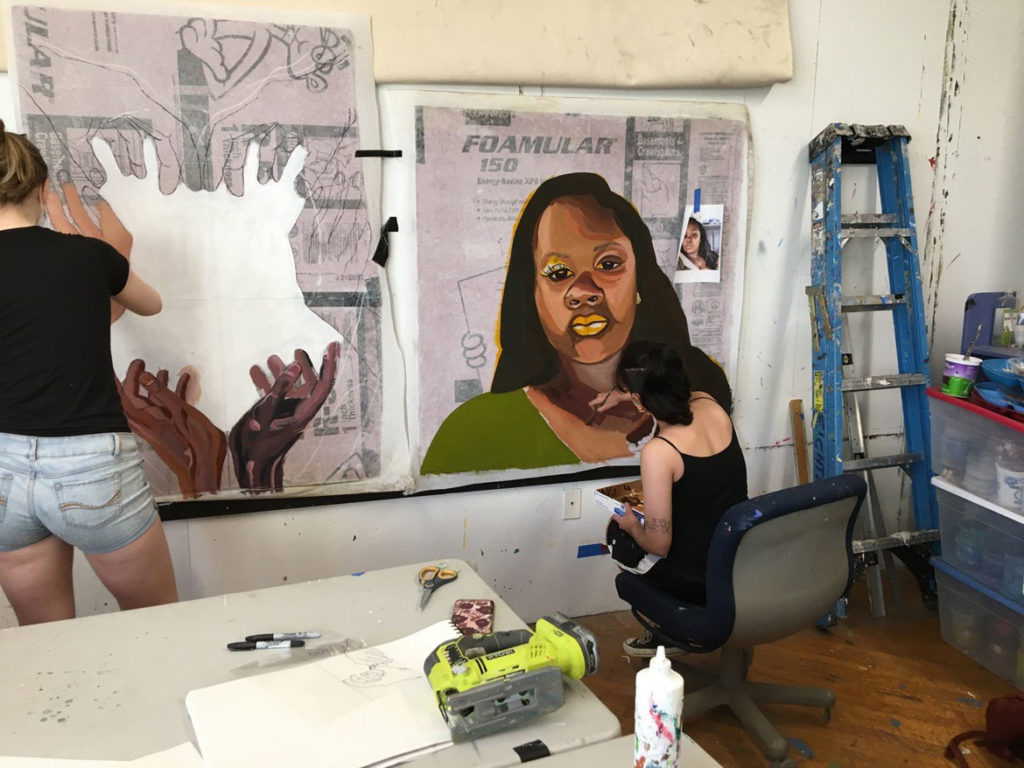
“Back in the ’80s, I used to make protest signs. A lot of the protests then were about Central America and there was the nuclear freezingse, which was to stop nuclear weapons,” Fichter recalls. He’d paint portraits of people killed in Central American wars, “the Reagan wars.”
“When these events happened,” Butt says, “I just felt like I need to do something, but I wasn’t sure what. I feel like a lot of my activism is through my artwork. … I’m showing my solidarity through my artwork.”

Butt, a painting major at Massachusetts College of Art and Design in Boston, is being supported by foster care in Connecticut. She told her social worker about creating the protest signs. “I sent her a picture of what I’m working on. She was so touched and proud of me for protesting and making art about it.” The social worker shared the photos with her superiors in the Connecticut Department of Children and Families.
“One of the higher ups wanted to put the picture on the DCF website,” Butt says. “People are saying they want to abolish the police and replace them with more therapists, psychiatrists and social workers. … Their jobs are really important. The police didn’t help me get into a better home. It was these social workers, these women who believed me.”
Pictured at top: David Fichter (right) with the protest icons at The Movement Continues rally at Cambridge Common, June 7, 2020. (Photo: Marc Levy / Cambridge Day) Thanks to Cambridge Day for permission to use their photos.
If this is the kind of coverage of arts, cultures and activisms you appreciate, please support Wonderland by contributing to Wonderland on Patreon. And sign up for our free, weekly newsletter so that you don’t miss any of our reporting.
All content © copyright by Greg Cook or its original creators.
